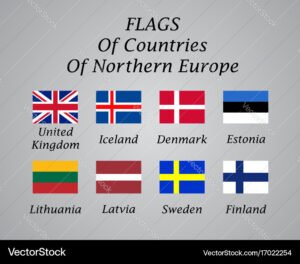Introduction

Dental health is an important aspect of total well-being but is often overlooked. Whether you are a European resident or an expatriate residing in Europe, understanding dental health insurance will help you better manage dental treatment costs. This article will provide a clear and understandable summary of how dental health insurance works in Europe, your alternatives, and what to consider when looking for coverage.
What is Dental Health Insurance?
Dental health insurance pays for routine exams, fillings, crowns, orthodontics, and more specialty therapies such as root canals or implants. While most European countries provide basic healthcare services as part of their national healthcare systems, dental treatment is sometimes only partially covered—if not at all. This is where private dental insurance can come in useful.
How Does Dental Health Insurance Work in Europe?

Europe comprises numerous countries, each with its healthcare system. In certain countries, dental health is covered by the public health system; in others, full dental treatment may need private insurance.
Here’s an overview of how dental health insurance works in various countries of Europe:
1. Western Europe (Germany, France, Belgium, Netherlands, etc.)

In many Western European countries, public healthcare systems provide some dental care, but only the most basic services. For example, in Germany, public health insurance covers standard dental procedures, but more specialized care (such as implants or braces) may demand additional private insurance. The same is true in France, where more expensive procedures necessitate additional insurance because the public system does not fully cover them.
Children and teenagers in countries like Belgium and the Netherlands are commonly covered for basic dental care. In contrast, adults must pay out of pocket or acquire a separate dental insurance plan. Private insurance covers part of the costs of more expensive therapies.
2. Northern Europe (Denmark, Sweden, Norway, Finland)

Scandinavian nations with extensive public health care systems include Denmark, Sweden, and Norway. Dental care is frequently excluded, though. For instance, children in Sweden receive free dental care, but adults must pay for the majority of their procedures. While the government subsidizes certain treatments, many choose to have more advanced procedures covered by private dental insurance.
The Danish public system offers some coverage, but to minimize large out-of-pocket expenses, private insurance is advised. Finland provides a mix of public and private choices as well; basic treatments are partially covered by the public system.
3. Southern Europe (Spain, Italy, Portugal, Greece)

Dental treatment usually plays a minor role in the public healthcare system in Southern Europe. For example, the public system in Spain only provides basic services such as extractions and certain emergency treatments. You’ll need private insurance or have to pay cash for more involved procedures like implants or routine upkeep.
Similar arrangements exist in Italy, where the public health system only partially provides dental care. The majority of patients who require more involved or routine dental care use private insurance. Since the dental healthcare systems in Portugal and Greece are likewise more privatized, most people would be well advised to purchase dental insurance.
4. Eastern Europe (Poland, Czech Republic, Hungary, Romania, etc.)

Dental care is often less expensive in Eastern Europe than it is in Western Europe, although many treatments are not covered by public healthcare systems. Basic dental care is covered by the public healthcare system in Poland and the Czech Republic, although more complex procedures (such as braces or crowns) typically require private insurance or cash expenditures.
Due to its reduced costs, Hungary is a well-liked location for dental tourism; nonetheless, for better coverage, people still frequently get private insurance. While children in Romania are entitled to basic healthcare, adults frequently require private insurance to pay for more costly treatments.
Types of Dental Health Insurance Plans

In Europe, dental health insurance policies typically belong to one of two types:
- Basic dental insurance: Pays for regular procedures like examinations, fillings, and cleanings. It might also partially pay for extractions or minimal emergency care.
- Comprehensive dental insurance covers more complex procedures including root canals, crowns, braces, and implants. Although this plan is more expensive, it provides greater protection.
It’s crucial to consider the kinds of treatments you could require while selecting a plan. If you just visit the dentist for examinations, a simple plan can be sufficient. However, if you require more intricate work, a thorough strategy may end up saving you a significant amount of money over time.
Things to Consider When Choosing Dental Insurance

When looking for dental health insurance, it’s important to compare different plans. Here are a few things to consider:
- Cost: Look at the monthly premiums and any out-of-pocket costs, such as copayments or deductibles. Cheaper plans might not cover as much, so it’s worth finding a balance between cost and coverage.
- Coverage: Make sure the plan covers the treatments you’re most likely to need. Check if the plan covers preventive care (like cleanings and checkups) and major treatments (like crowns or braces).
- Waiting Periods: Some plans have waiting periods before they’ll cover certain treatments. Make sure you understand when your coverage kicks in.
- Network of Dentists: Some insurance plans have a network of approved dentists. If you already have a preferred dentist, make sure they are part of the network.
- Annual Limits: Many plans have a maximum limit they’ll pay out per year. If you need major dental work, make sure your plan’s limit is high enough to cover it.
- CLICK HERE FOR MORE INFORMATION
Conclusion
Dental health insurance can help you save money on dental procedures and avoid unforeseen expenses. In many regions of Europe, state healthcare systems do not fully cover dental care, making private insurance a crucial choice for anyone requiring more than basic care.
When selecting dental insurance, you should consider your unique needs and compare various plans to discover the one that is best for you. Whether you’re a resident or an expat, having the correct dental insurance can provide peace of mind and help you keep your teeth in good condition without breaking the bank.
FAQS
1. What is dental health insurance?
Dental health insurance is a type of insurance that helps cover the cost of dental care, such as routine checkups, cleanings, fillings, and more advanced treatments like crowns, braces, and implants. Depending on the type of plan, it can either cover partial or full costs of treatments.
2. Is dental care covered by public healthcare systems in Europe?
It depends on the country. In some European countries, like Germany or Sweden, basic dental care is covered under public healthcare systems, especially for children. However, for adults or more complex treatments like orthodontics or implants, public healthcare may not fully cover the costs, and private insurance is often necessary.
3. Do I need private dental health insurance in Europe?
In many cases, private dental health insurance is beneficial, especially if you require more than basic care. While some public healthcare systems may cover basic treatments, private insurance can provide coverage for more advanced or expensive procedures, such as braces, root canals, or dental implants.
4. How much does dental health insurance cost in Europe?
The cost of dental health insurance varies depending on the country, the type of plan, and the coverage offered. Basic plans that cover preventive care are usually more affordable, while comprehensive plans covering major treatments cost more. Monthly premiums can range from €10 to over €50, depending on the plan and coverage.